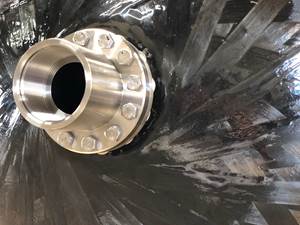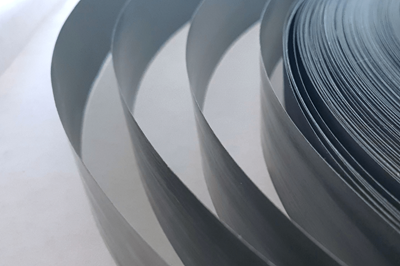Novel woven UD fabrics are designed for versatility, reliability
CAMX 2024: Zoltek introduces PX35UD0300EPW and PX35UD0600EPW, carbon fiber fabrics providing easy handling that have the potential to meet the evolving needs of composite applications.
Share
Zoltek (Bridgeton, Mo., U.S.) is presenting its latest unidirectional (UD) woven fabric innovations, the PX35UD0300EPW and PX35UD0600EPW, which stand out distinctly from the company’s existing PX35 series, offering a range of features and advantages designed to meet the evolving needs of the composites industry.
Unlike previous offerings, PX35UD0300EPW and PX35UD0600EPW are woven, heat-bonded UD fabrics using a distinctive stabilization technique for easy handling during wet layup. The weft bonding yarn enables custom cutting on-site to minimize scrap. This structure enhances ease of handling and increases the fabric’s strength and stability. The woven nature ensures clean and efficient cutting minus frayed edges.
The fabrics are comprised of Zoltek PX35-1 (multi-compatible with epoxy and vinyl ester) and PX35-7 (compatible with vinyl ester) 50K continuous tow carbon fiber, enhancing performance and durability.
According to Zoltek, the U.S.-made PX35UD0300EPW and PX35UD0600EPW fabrics offer a strategic advantage in the North American market, particularly in government-supported and defense projects. Previously, Zoltek says it only offered stitched UD types; this advancement, however, enables the company to target infrastructure applications more effectively and provide shorter lead times.
Other potential applications are listed, including reinforcing concrete structures; lining pipes, tanks and silos; and constructing water reservoirs, tunnels, bridges, chimneys and columns.
Zoltek is actively seeking to engage with companies qualified to use fiber-reinforced polymer (FRP) systems where its material can seamlessly replace currently used materials. Additionally, Zoltek aims to attract businesses looking to develop their own FRP systems with their own resins.
Related Content
-
Infinite Composites: Type V tanks for space, hydrogen, automotive and more
After a decade of proving its linerless, weight-saving composite tanks with NASA and more than 30 aerospace companies, this CryoSphere pioneer is scaling for growth in commercial space and sustainable transportation on Earth.
-
Low-cost, efficient CFRP anisogrid lattice structures
CIRA uses patented parallel winding, dry fiber, silicone tooling and resin infusion to cut labor for lightweight, heavily loaded space applications.
-
Revisiting the OceanGate Titan disaster
A year has passed since the tragic loss of the Titan submersible that claimed the lives of five people. What lessons have been learned from the disaster?
Related Content
Infinite Composites: Type V tanks for space, hydrogen, automotive and more
After a decade of proving its linerless, weight-saving composite tanks with NASA and more than 30 aerospace companies, this CryoSphere pioneer is scaling for growth in commercial space and sustainable transportation on Earth.
Read MoreLow-cost, efficient CFRP anisogrid lattice structures
CIRA uses patented parallel winding, dry fiber, silicone tooling and resin infusion to cut labor for lightweight, heavily loaded space applications.
Read MoreRevisiting the OceanGate Titan disaster
A year has passed since the tragic loss of the Titan submersible that claimed the lives of five people. What lessons have been learned from the disaster?
Read MoreWelding is not bonding
Discussion of the issues in our understanding of thermoplastic composite welded structures and certification of the latest materials and welding technologies for future airframes.
Read MoreRead Next
Zoltek, A + Composites present novel CFRTP UD tape
50K carbon fiber tow impregnated with polypropylene features 50 µm thickness, offers potential for weight savings and increased mechanical performance.
Read MoreComposites end markets: New space (2025)
Composite materials — with their unmatched strength-to-weight ratio, durability in extreme environments and design versatility — are at the heart of innovations in satellites, propulsion systems and lunar exploration vehicles, propelling the space economy toward a $1.8 trillion future.
Read MoreAll-recycled, needle-punched nonwoven CFRP slashes carbon footprint of Formula 2 seat
Dallara and Tenowo collaborate to produce a race-ready Formula 2 seat using recycled carbon fiber, reducing CO2 emissions by 97.5% compared to virgin materials.
Read More







